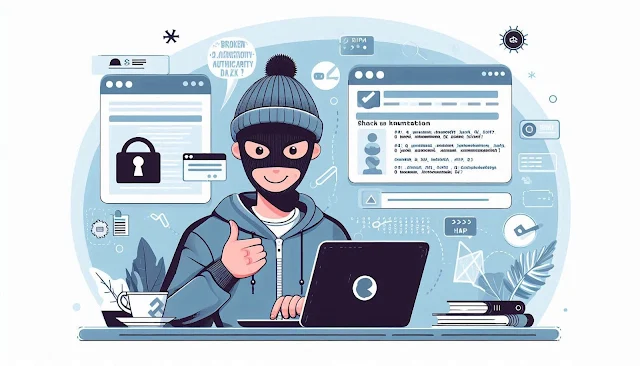Prevent Broken Authentication in Laravel: Best Practices and Fixes
In today’s evolving cybersecurity landscape, broken authentication is a critical vulnerability that can lead to severe data breaches. If your Laravel application isn’t secured against authentication flaws, malicious attackers could exploit weak session handling or improperly secured user credentials.
In this blog, we’ll explore:
- What broken authentication is and why it’s dangerous.
- How Laravel applications are vulnerable.
- Practical coding examples to prevent this issue.
- Tools to analyze vulnerabilities, including our tool to test website security free.
What is Broken Authentication?
Broken authentication occurs when an application fails to protect its authentication mechanisms properly. This often includes:
- Weak password requirements.
- Exposed session IDs.
- Missing Multi-Factor Authentication (MFA).
Such vulnerabilities allow attackers to impersonate users and access sensitive data.
Laravel and Authentication Risks
Laravel provides a robust authentication system out of the box. However, developers can unintentionally introduce risks by:
- Using outdated hashing algorithms.
- Failing to protect session cookies with HTTP-only and secure flags.
- Not rotating tokens after authentication.
How to Fix Broken Authentication in Laravel
Let’s address broken authentication with a coding example and security practices.
Coding Example: Secure Password Storage
Laravel uses bcrypt for password hashing by default, but ensure that it is implemented correctly:
use Illuminate\Support\Facades\Hash;
// Storing a password securely
$user->password = Hash::make($request->password);
$user->save();
// Verifying the password
if (Hash::check($request->password, $user->password)) {
// Password is valid
Auth::login($user);
} else {
return response()->json(['error' => 'Invalid credentials'], 401);
}
Always enforce strong password policies and rate-limit login attempts to prevent brute-force attacks.
Adding MFA to Laravel
To strengthen authentication, integrate Multi-Factor Authentication (MFA):
- Use the laravel-mfa package for easy setup.
- Send time-sensitive codes via SMS or email.
- Use authenticators like Google Authenticator for added security.
Tools to Identify Authentication Flaws
Want to see if your Laravel application has authentication issues? Use our Website Security Checker tool.
 |
| Screenshot of our Website Security Checker tool analyzing a Laravel application for vulnerabilities. |
This tool scans your website for security misconfigurations and authentication flaws.
Understanding Vulnerability Reports
After using the tool, you’ll receive a detailed vulnerability assessment report. Here's an example screenshot of such a report:
 |
| Example of a vulnerability assessment report generated with our free tool, providing insights into possible vulnerabilities |
This report highlights weak session handling, password issues, and potential exploits, offering actionable fixes for your application.
Best Practices for Securing Laravel Authentication
- Enforce Strong Passwords: Use Laravel’s password validation rules.
- Secure Sessions: Set cookies as
SecureandHTTP-Only. - Enable Rate Limiting: Use Laravel's built-in
ThrottleRequestsmiddleware. - Regular Updates: Keep Laravel and its dependencies updated to the latest version.
- Audit Authentication Logs: Regularly review login attempts for anomalies.
Why Prioritize Authentication Security?
With cyber threats on the rise, a single vulnerability could expose sensitive user data. By proactively securing authentication mechanisms in Laravel, you protect your application and users from potential attacks.
Try Our Free Tool Today
Take the first step toward securing your Laravel application. Use our Website Security Scanner tool to identify and fix authentication flaws.
Don’t wait for a breach—act now and make your Laravel app unbreakable.




Comments
Post a Comment